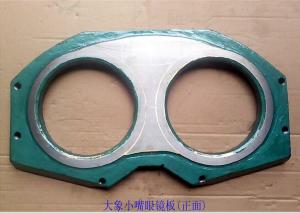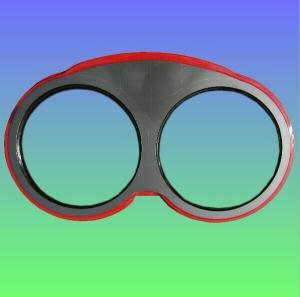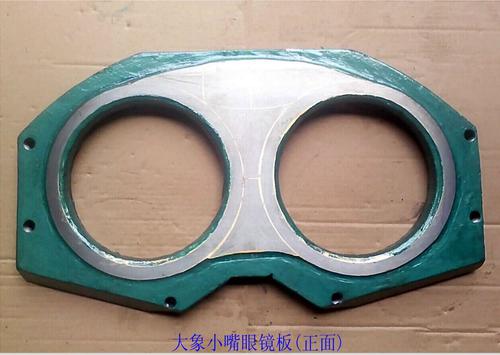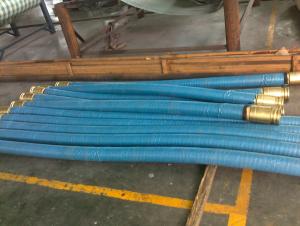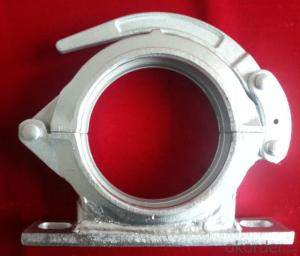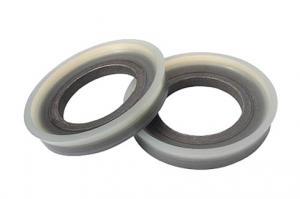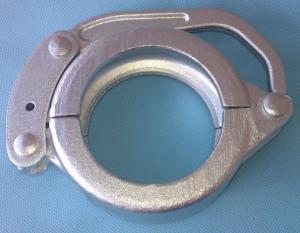Schwing Spectacle Wearing Plate and Cutting Ring
- Loading Port:
- Tianjin
- Payment Terms:
- TT or LC
- Min Order Qty:
- 3 pc
- Supply Capability:
- 1000 pc/month
OKorder Service Pledge
OKorder Financial Service
You Might Also Like
Product Description:
Product Name: High Quality Schwing Spectacle Wearing Plate and Cutting Ring
1. Specification
1. Material: Plate body S35C steel, tungsten carbide E5 grade ,
2. Lifetime: 30,000~80,000cbm
3. HRA≥86
4. Germany Welding rod used for hardfacing
5. tensile strength ≥ 2500 N/mm2
6. Application: trailer and trunk mounted Schwing Pump
Notes: total series of Concrete Pump Spectacle Wear Plate and Cutting Ring for different brand concrete pump (PUTZMEISTER, SCHWING, CIFA, SANY, ZOOMLION, IHI, KYOKUTO,Niigata Etc) available from us.
2. Application
Our High Quality Schwing Spectacle Wearing Plate and Cutting Ring have been successfully exported to many countries from 1998, Our main markets as below: Middle East, Southeast Asia, America, Brazil, Italy, Russia, South Africa etc
Aiming at the largest concrete pump parts manufacturer, and reliable, professional supplier in China, we can supply concrete pump elbows, delivery pipes, casting or forging couplings, end rubber hoses, rubber pistons, tungsten wear plates, delivery cylinders, and other hydraulic parts, one stop service for your concrete pump parts and accessory business.
3. Package
Every 60pcs High Quality Schwing Spectacle Wearing Plate and Cutting Ring put in one seaworthy wooden box, and 20 boxes in one 20feet container.
FAQ:
Q1: Why buy Materials & Equipment from us?
A1: All products have its ISO certifications, adheres to the highest standards and a commitment to supply chain safety and customer satisfaction.
Q2: How do we guarantee the quality of our products?
A2: We have established an advanced quality management system which conducts strict quality tests at every step, from raw materials to the final product. At the same time, we provide extensive follow-up service assurances as required.
Q3: How soon can we receive the product after purchase?
A3: Within three days of placing an order, we will begin production. The specific shipping date is dependent upon international and government factors, but is typically 10 to 30 workdays.
Q4: If we can produce some High Quality Schwing Spectacle Wearing Plate and Cutting Ring according to customers request?
A4: Yes, we can produce High Quality Schwing Spectacle Wearing Plate and Cutting Ring according to the difference country situations and different concrete pump to make it suitable to the market and customers. We have very professional technical team to make the design.
Q5: How to make a quick resolution for after service?
A5:We have overseas branches all-around of world, IF needed, the seller shall dispatch 2 engineers to the buyer's site for supervision of training. The buyer shall make available of necessary facilities &skilled personnel at site for training.
Image:
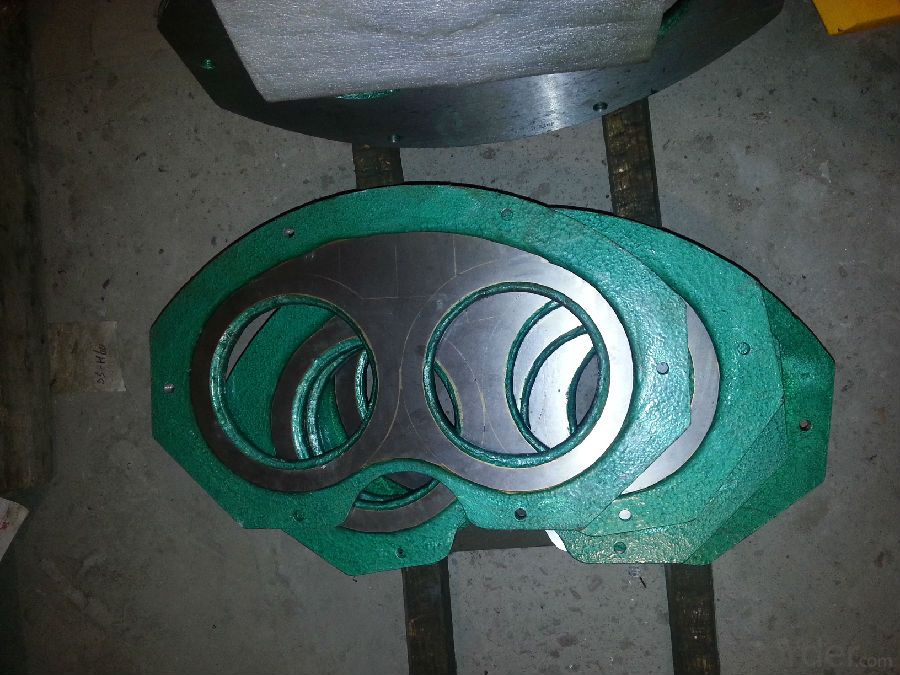
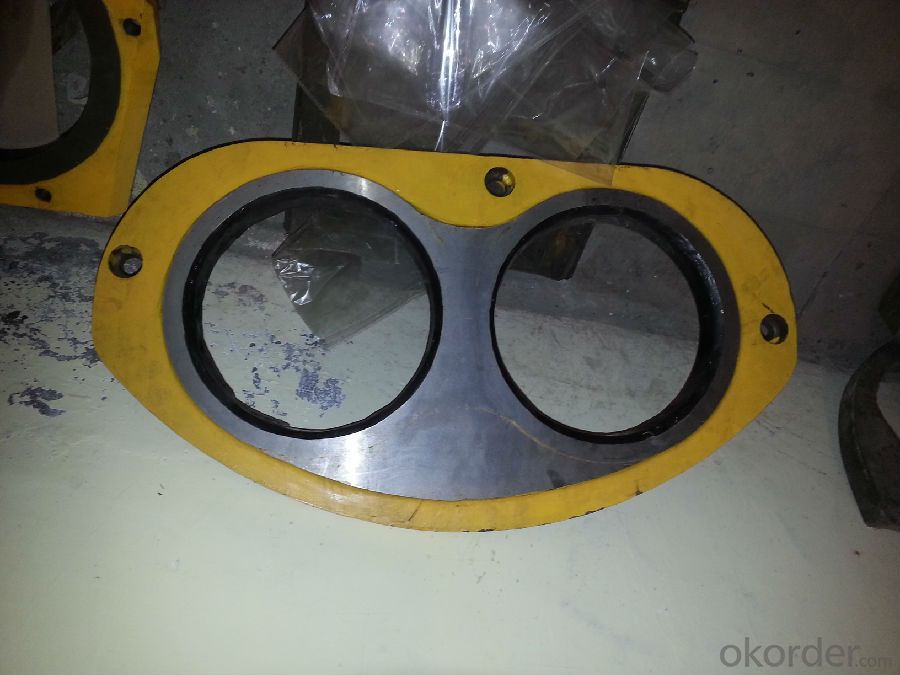
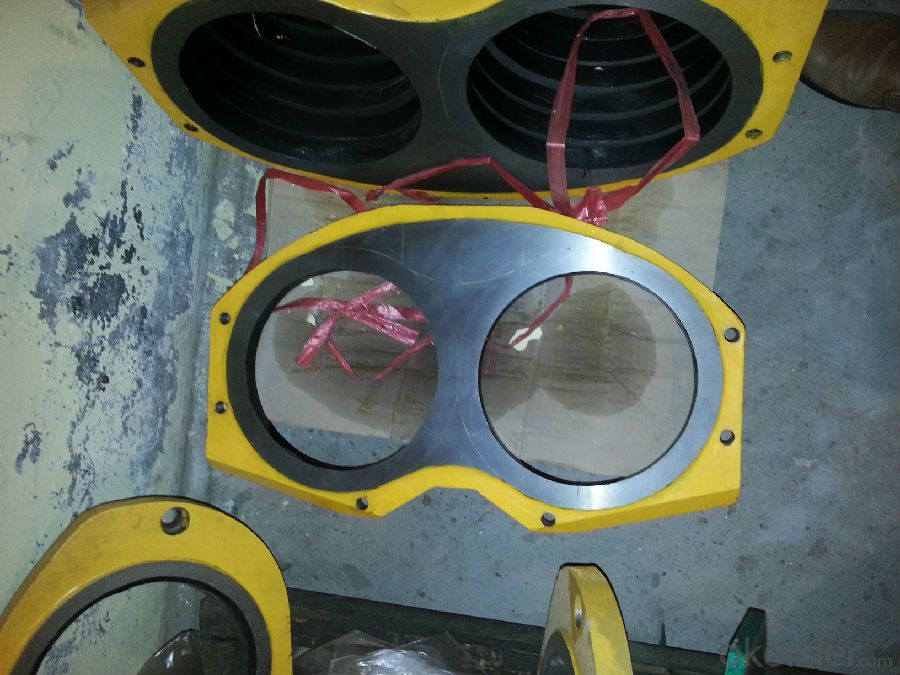
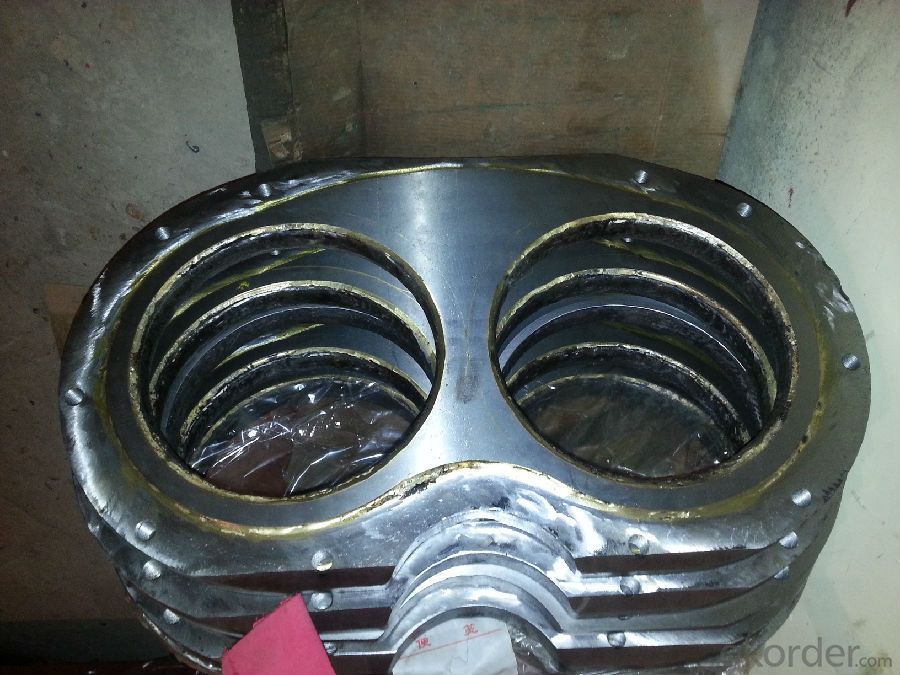
- Q: How often should concrete pump hydraulic filters be inspected and replaced?
- Concrete pump hydraulic filters should be inspected on a regular basis, ideally at least once every three months. However, the frequency of inspection and replacement may vary depending on the specific conditions and usage of the concrete pump. If the pump is operating in particularly harsh environments or is being used extensively, more frequent inspections and replacements may be necessary. It is important to monitor the condition of the hydraulic filters closely and replace them whenever they become clogged, damaged or worn out. Neglecting to inspect and replace the filters as needed can result in decreased performance and efficiency of the concrete pump, as well as potential damage to the hydraulic system.
- Q: Can concrete pump spare parts be resold or traded in for new parts?
- It is possible to resell or trade in concrete pump spare parts for new ones. The viability of reselling them depends on the condition and demand for the parts. There are different platforms, both online and offline, where individuals or businesses can sell their used spare parts. Moreover, some manufacturers or distributors may have trade-in programs that allow customers to exchange old parts for new ones, offering a cost-effective way to upgrade their equipment. However, the resale value or trade-in options may differ based on factors like the age, condition, and market demand for the specific parts.
- Q: How often should hopper cylinders be inspected or replaced in a concrete pump?
- To ensure optimal performance and prevent potential malfunctions, it is essential to regularly inspect hopper cylinders in a concrete pump. The frequency of inspections and replacements depends on various factors, such as usage intensity, the type of concrete being pumped, and the overall condition of the equipment. As a general recommendation, it is advised to inspect hopper cylinders at least once a month or after every 100 hours of operation, whichever comes first. During these inspections, thoroughly examine the cylinders for any indications of wear, corrosion, or damage. Additionally, check the functioning of the seals, gaskets, and other components connected to the cylinders. Nevertheless, it is crucial to note that the inspection frequency may need to be increased if the pumped concrete contains abrasive materials or if the pump operates in harsh environmental conditions. In such situations, more frequent inspections and replacements may be necessary to prevent unexpected breakdowns and costly repairs. Ultimately, the objective is to maintain the hopper cylinders in a good state and promptly address any issues. Regular inspections, along with routine maintenance and proper cleaning, can significantly extend the lifespan of the cylinders and ensure the concrete pump operates efficiently and safely.
- Q: How can a faulty gearbox affect the pump's performance?
- A faulty gearbox can significantly impact the performance of a pump. The gearbox is responsible for transmitting power from the motor to the pump, and any dysfunction in this component can lead to various issues. Firstly, a faulty gearbox can cause a decrease in the pump's efficiency. The gearbox is designed to regulate the speed and torque of the pump, ensuring that it operates at optimal levels. If the gearbox is faulty, it may not be able to provide the necessary power to the pump, resulting in reduced performance and lower efficiency. This can lead to increased energy consumption and decreased overall productivity. Additionally, a faulty gearbox can cause the pump to experience excessive vibration and noise. A properly functioning gearbox helps to absorb and distribute the forces generated during operation, reducing vibration and noise levels. However, if the gearbox is faulty, it may fail to dampen these forces adequately, resulting in increased vibrations and noise. This can not only affect the pump's performance but also lead to premature wear and tear of other components, further impacting its overall efficiency. Furthermore, a faulty gearbox can result in inconsistent flow rates and pressure fluctuations. The gearbox plays a crucial role in controlling the speed and output of the pump. If the gearbox is malfunctioning, it may not be able to maintain a consistent flow rate or pressure, leading to fluctuations in the pump's performance. Inconsistent flow rates can disrupt processes that rely on precise volumes or pressures, causing inefficiencies and potential damage to downstream equipment. In conclusion, a faulty gearbox can have a detrimental effect on the performance of a pump. It can lead to decreased efficiency, increased vibrations and noise, as well as inconsistent flow rates and pressure fluctuations. Therefore, regular maintenance and prompt repair or replacement of faulty gearboxes are essential to ensure the optimal functioning of pumps and prevent any further damage or operational issues.
- Q: How can I minimize downtime during the replacement of concrete pump spare parts?
- Minimizing downtime during the replacement of concrete pump spare parts requires careful planning and efficient execution. Here are a few strategies that can help you achieve this: 1. Regular maintenance: Implement a proactive maintenance schedule to identify and replace worn-out parts before they fail. Regularly inspecting the concrete pump and its components can help prevent unexpected breakdowns and reduce downtime. 2. Stock up on spare parts: Keep an inventory of commonly required spare parts, such as seals, filters, and hoses. Having these items readily available can significantly reduce the time spent on sourcing and ordering parts when a breakdown occurs. 3. Partner with reliable suppliers: Establish a relationship with reliable suppliers who can provide high-quality spare parts quickly. This ensures that you have access to the required parts promptly, minimizing the waiting time for delivery. 4. Train your team: Provide training to your maintenance and operational staff on how to identify, troubleshoot, and replace concrete pump spare parts efficiently. Equipping your team with the necessary skills will enable them to address issues promptly, reducing the overall downtime. 5. Plan maintenance during downtime: Schedule maintenance and replacement of spare parts during periods of low demand or downtime. This could be during weekends, holidays, or slower construction phases. Planning the work strategically ensures that it has minimal impact on ongoing projects. 6. Optimize workflow: Streamline your maintenance process by identifying areas that cause delays or bottlenecks. Look for opportunities to improve efficiency, such as optimizing the layout of spare parts, tools, and equipment, or implementing standardized procedures for repair and replacement. 7. Use technology: Leverage technology to monitor the performance and condition of your concrete pump. Implementing a condition monitoring system can help detect early signs of potential failures, allowing you to plan for maintenance and part replacement in advance. By implementing these strategies, you can minimize downtime during the replacement of concrete pump spare parts, ensuring uninterrupted operations and maximizing productivity.
- Q: What is the washing process of the concrete pump pipe?
- Take some concrete out of the first straight pipe, squeeze it into a saturated sponge ball, and fill a sponge ball with a cement bag soaked in water. The paper also works well
- Q: How can one determine the correct viscosity and temperature range for lubricants used in concrete pump spare parts?
- To determine the correct viscosity and temperature range for lubricants used in concrete pump spare parts, one can refer to the manufacturer's recommendations and specifications. These guidelines will outline the appropriate viscosity grade and temperature range for optimal performance and longevity of the spare parts. It is important to follow these recommendations to ensure efficient lubrication and protection of the concrete pump components. Additionally, consulting with industry experts or conducting research on lubrication requirements specific to concrete pump spare parts can also provide valuable insights for determining the correct viscosity and temperature range.
- Q: How often should hydraulic accumulator bladders be inspected or replaced in a concrete pump?
- Regular inspections of hydraulic accumulator bladders in a concrete pump are essential to ensure their good condition and proper functioning. Ideally, these inspections should be conducted on a monthly basis. However, the frequency of inspection may vary depending on the specific operating conditions of the concrete pump. During the inspection, it is important to carefully examine the bladders for any signs of wear, damage, or leakage. If any of these issues are detected, immediate replacement of the bladders is recommended. This will prevent further damage to the hydraulic system and maintain the overall efficiency and safety of the concrete pump. In addition to regular inspections, it is crucial to adhere to the manufacturer's guidelines regarding the replacement interval for hydraulic accumulator bladders. The manufacturer usually specifies this interval, taking into account factors such as the type of accumulator and the working conditions of the concrete pump. Ultimately, the objective is to ensure that the hydraulic accumulator bladders are in optimal condition to uphold the performance and reliability of the concrete pump. Therefore, conducting regular inspections and promptly replacing bladders are vital for the safe and efficient operation of the concrete pump.
- Q: What are the different types of concrete pump rubber hoses?
- There are several different types of concrete pump rubber hoses available, including wire-reinforced hoses, fabric-reinforced hoses, steel wire braided hoses, and composite hoses. These hoses are designed to withstand the high pressure and abrasive materials involved in pumping concrete, ensuring safe and efficient operations.
- Q: What is the purpose of a concrete pump control panel?
- Operators use a concrete pump control panel to centrally control different functions and parameters of the concrete pump. By using this panel, operators can initiate and halt the pump, manage its speed and direction, and monitor and regulate the flow and pressure of the concrete being pumped. Safety measures like emergency stop buttons and alarms are also incorporated in the control panel to safeguard both the operators and the equipment. Additionally, the control panel may have diagnostic capabilities that present real-time data and alerts for maintenance and troubleshooting purposes. In summary, the aim of a concrete pump control panel is to improve efficiency, precision, and safety in the concrete pumping process.
Send your message to us
Schwing Spectacle Wearing Plate and Cutting Ring
- Loading Port:
- Tianjin
- Payment Terms:
- TT or LC
- Min Order Qty:
- 3 pc
- Supply Capability:
- 1000 pc/month
OKorder Service Pledge
OKorder Financial Service
Similar products
Hot products
Hot Searches
Related keywords
